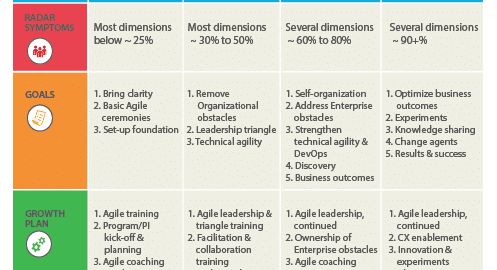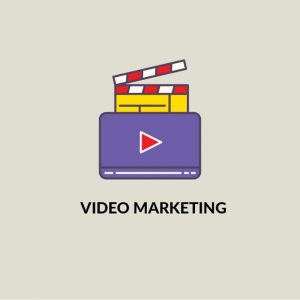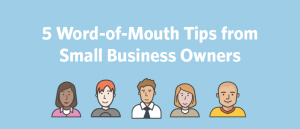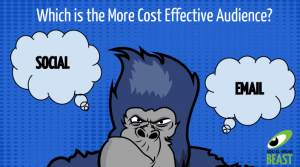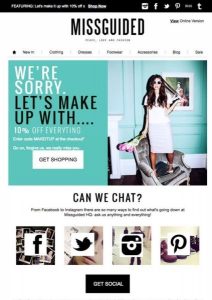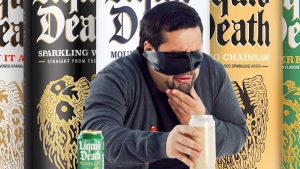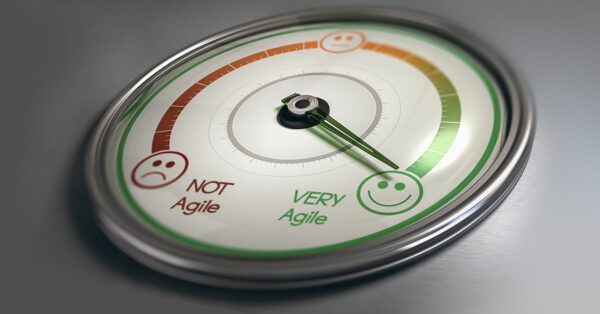
Lately, I’ve been hearing a lot of buzz about agile assessment tools. Whether it is comparative agility or the AgilityHealth assessment, it seems that people want to be able to measure the relative agility of one or more of their teams.
Most agile coaches that I know have developed some form of assessment. I had a 20 question Scrum test and used a more elaborate 50 question assessment built in Excel years ago. But why roll your own when great tools already exist?
Why Measure Agility?
Different reasons exist for measuring agility. Most people want to see some progress; to know whether they are making a difference. Some of the most common reasons I have heard include:
- Decide which teams need help – If you have five or 20 teams, which ones need more support or coaching to help them perform better?
- Determine if investment in agile ways of working is paying off – Should we keep paying for training and coaching? Are we getting a return on our investment?
- Because measuring is what you do – We measure everything and so why not measure this?
What are the most popular Agile Assessment Tools today?
One of the first agility measures I ever heard of was the Nokia Test. I know – Nokia is probably not the first company that comes to mind today when you think about agility. Back in 2005, Bas Vodde created the Nokia test to gauge agility across the agile teams he supported at Nokia. It was subsequently picked up by Jeff Sutherland and expanded to include Scrum practices. It remains a simple and quick test of agile and Scrum.
The Nokia Test is not nearly as popular as the big three assessments that followed. Let’s look at Comparative Agility, Agile Fluency Model, and AgilityHealth.
Comparative Agility
Mike Cohn and Kenny Rubin created the Comparative Agility assessment in 2007. As the name implies, a key feature of Comparative Agility is the comparison of your team or teams to other teams in their online database. Within five years of the launch, Comparative Agility already had over 5,500 teams in their database. As the database grew, comparisons could be made to teams of the same age, in the same industry, or developing similar solutions. Today over 14,000 organizations have used the Comparative Agility tools.
Jorgen Hesselberg was an early adopter of Comparative Agility, ironically when he was at Nokia in 2008. Jorgen purchased Comparative Agility from Cohn and Rubin in 2018 and has since expanded it significantly.
Today, Comparative Agility is more of a continuous improvement platform. You can use the original Comparative Agile assessment, choose from one of 20+ other surveys, or create your own unique assessment. Here is a view of some of the available assessments:
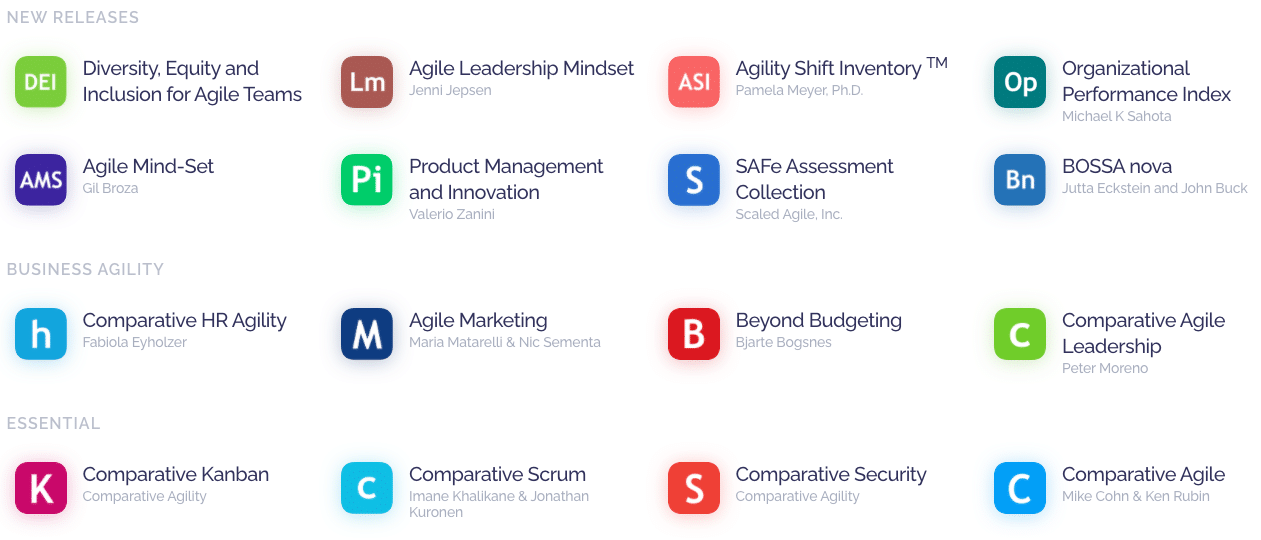
Strengths of Comparative Agility Assessments:
- Does not require training or certification to administer
- Huge database of comparison companies and teams
- Wide range of surveys – psychological safety, organizational performance index, and even SAFe assessment
- Questions validated by data scientists for reliability
Weaknesses of the Comparative Agility Assessments:
- TBD
Pricing for 5 and 20 teams:
- CA provides a free version that allows you to have 5 collectors (5 team assessments).
- The company version allows for up to 20 collectors for $ 299 annually – this would cover 4 assessments for 5 teams in a year, making it the most cost-competitive.
Learn More about Comparative Agility:
You can check out the Comparative Agility website to learn more about the tool.
AgilityHealth
AgilityHealth was created by Sally Elatta of Agile Transformation in 2014. (Disclaimer: I worked with and am a big fan of Sally and Agile Transformation.) AgilityHealth is the tool that I am most familiar with – I was trained and certified in 2014 as an assessor. Though to be honest, I only used it once in 2014 and haven’t spent much time on it since.
The tool was originally launched as a tool to support ‘retrospectives on steroids’. It was recommended that the assessment be conducted quarterly and it requires a facilitator. The facilitator walks through the questions and each team member records their responses on their own in the online tool. The nifty graphical result shows the range of responses and the average for each team.
AgilityHealth has expanded to offer a range of assessments for different agile roles, and different levels of the organization.
Initially, AgilityHealth used Tuckman’s stages of team development like Forming, Storming, Norming, and Performing but found that teams were not as objective as they would have liked. So they moved to the following levels: Pre-Crawl, Crawl, Walk, Run, Fly
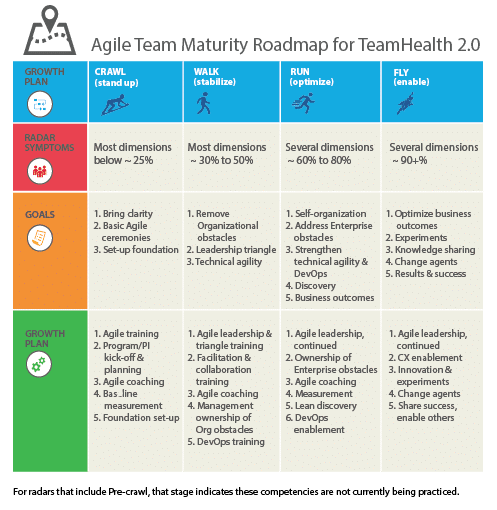
Strengths of the AgilityHealth Assessment:
- Online tool
- Wonderful graphical output
- Variety of assessments
- Provides a progression
Weaknesses of AgilityHealth Assessment:
- Requires a trained facilitator
Ballpark Pricing:
- Prices vary but it seems to be about $ 400-$ 500 per team per assessment. If done quarterly, that is about $ 2,000 annually per team excluding and facilitator fee.
Learn more about AgilityHealth:
You can check out the AgilityHealth website for lots of details about the tool.
Agile Fluency
Agile Fluency was first published by agile veterans James Shore and Diana Larsen in 2012 and updated in 2018. They created the model based on ways that people practice agile and use it well.
It is positioned as a tool for consultants to use with client organizations. In fact, the home page emphasizes the potential fees to be generated which is a bit of a turnoff.
The tool provides feedback in terms of 5 levels of fluency: Pre-Agile, Focusing, Delivering, Strengthening and Optimizing.
Strengths of the Agile Fluency tool:
- Agnostic in terms of practices (Kanban or Scrum)
- Provides a fluency progression
Weaknesses of the Agile Fluency Tool:
- Requires an experienced agile coach trained as a facilitator
- Facilitation training is relatively expensive
Ballpark Pricing:
- Getting qualified to facilitate is about $ 5,000
- AFAICT, as a facilitator, it looks like you can charge $ 5,000 to $ 10,000 per team per year, or whatever the market will bear.
Learn More:
You can check out the Agile Fluency site, download the free eBook The Agile Fluency Model, or watch this short video about the model which features Diana Larsen and James Shore.
Other Assessment Tools
There are many other lesser-known agile assessment tools from a variety of companies. Some of the more recognizable company names include Thoughtworks, IBM, Eliassen Group, Atlassian, and NetObjectives.
Do you have experience with one or more of these tools that you would like to share? Please leave your comments below.
This article originally appeared here and has been republished with permission
Business & Finance Articles on Business 2 Community
(36)
